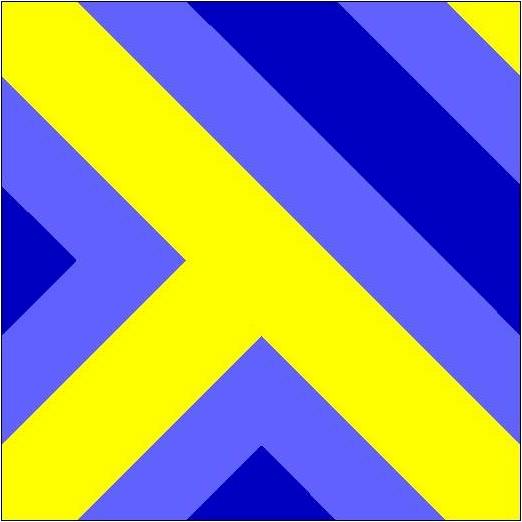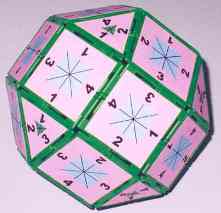arXiv.org > math > arXiv:1106.0953
Periodical plane puzzles with numbers
Download: PDF Other formats
Periodical plane puzzles with numbers
Download: PDF Other formats
-
Consider a periodical (in two independent directions) tiling of the plane with polygons (faces). In this article we shall only give examples using squares, regular hexagons, equilateral triangles and parallelograms ("unions" of two equilateral triangles). We shall call some "multiple" of the fundamental region "the board". We naturally identify pairs of corresponding edges of the the board. Figures 9 and 19-29, in this article, show different boards. The "border" of the board is represented by a yellow thick line, unless part of it or all of it is the edge of a face.
The board is tiled by a finite number of polygons. Construct polygonal plates in the same number, shape and size as the polygons of the board. Adjacent to each side of each plate draw a number, or two numbers, like it is shown in Figures 1 and 18-29. Figure 1 shows the obvious possibility of having plates with simple drawings, coloured drawings, etc.
Now the game is to put the plates over the board polygons in such a way that the numbers near each board edge are equal. If there is at least one solution of this puzzle one says that we have a periodical plane puzzle with numbers.
These puzzles are a tool in teaching and learning mathematics. For those that already have some mathematical knowledge, they are a source for many examples and exercises, that go from the elementary to complex ones, in combinatorics, group theory (including symmetry and permutation groups), programming, and so on. The object of this work is to point out some possibilities by giving simple examples.
The computer is the only practical way of "materializing" infinite periodical plane puzzles. Hence, these puzzles can be very well put into practice as computer games.
This article follows some others on puzzles with numbers.
The board is tiled by a finite number of polygons. Construct polygonal plates in the same number, shape and size as the polygons of the board. Adjacent to each side of each plate draw a number, or two numbers, like it is shown in Figures 1 and 18-29. Figure 1 shows the obvious possibility of having plates with simple drawings, coloured drawings, etc.
Now the game is to put the plates over the board polygons in such a way that the numbers near each board edge are equal. If there is at least one solution of this puzzle one says that we have a periodical plane puzzle with numbers.
These puzzles are a tool in teaching and learning mathematics. For those that already have some mathematical knowledge, they are a source for many examples and exercises, that go from the elementary to complex ones, in combinatorics, group theory (including symmetry and permutation groups), programming, and so on. The object of this work is to point out some possibilities by giving simple examples.
The computer is the only practical way of "materializing" infinite periodical plane puzzles. Hence, these puzzles can be very well put into practice as computer games.
This article follows some others on puzzles with numbers.




.jpg)
.jpg)
.jpg)


.jpg)
.jpg)





No comments:
Post a Comment